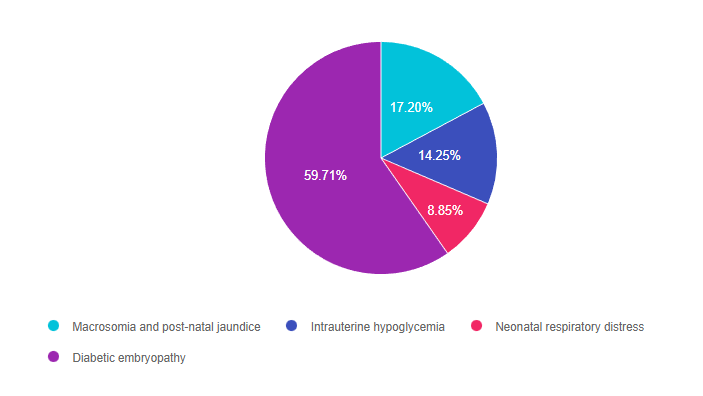
For last week’s practice question, we quizzed test takers on complications of hyperglycemia during pregnancy. 60% of respondents chose the best answer. We want to share this important information, so you can pass it on to people living with diabetes and your colleagues, plus prepare for exam success!
Before we start though, if you don’t want any spoilers and haven’t tried the question yet, you can answer it below: Answer Question
Question: AR has type 1 diabetes and is in shock because they just discovered they are 6 weeks pregnant. AR uses a CGM and insulin pump to manage their diabetes and their most recent A1C is 8.3%. Which of the following is a potential complication associated with hyperglycemia during the first 10 weeks of pregnancy?
Answer Choices:
- Macrosomia and post-natal jaundice
- Intrauterine hypoglycemia
- Neonatal respiratory distress
- Diabetic embryopathy

As shown above, the most common choice was option 4, the second most common answer was option 1, then option 2, and finally 3.
Getting to the Best Answer
Answer 1 is incorrect. 17.20% chose this answer, “Macrosomia and post-natal jaundice.” This is a juicy answer since macrosomia and post natal jaundice are often associated with gestational diabetes (GDM) However, this question is not asking about GDM, which is usually diagnosed between 24-28 weeks of pregnancy. In this question, AR already has type 1 when becoming pregnant and wants to know the consequence of hyperglycemia during the first 10 weeks when the fetal organs are developing.
Answer 2 is incorrect. 14.25% of you chose this answer, “Intrauterine hypoglycemia.” This answer is designed to lure the test taker in with the word hypoglycemia. A fetus who is exposed to excess glucose in utero is at risk of post natal hypoglycemia AFTER delivery, since they no longer are receiving maternal glucose and their pancreas is making abundant insulin. A fetus exposed to excess intrauterine glucose levels is at risk of hyperglycemia (not hypo).
Answer 3 is incorrect. 8.85% of respondents chose this answer, “Neonatal respiratory distress.” This is a juicy answer since neonatal respiratory distress is often associated with GDM and diabetes in pregnancy. However, this question is not asking about post delivery complications. In this question, AR already has type 1 when becoming pregnant and wants to know the consequence of hyperglycemia during the first 10 weeks when the fetal organs are developing.
Finally, Answer 4 is correct. 59.71% chose this answer, “Diabetic embryopathy.” Yes, GREAT JOB, this is the best answer. The first trimester of fetal development is when the organs are developing. A fetus exposed to excess levels of glucose during this critical time is at increased risk of congenital defects like anencephaly, microcephaly, neural tube defects and others. For people with diabetes, achieving an A1C of less than 6.5% before conceptions improves outcomes and decreases risk of congenital anomalies. With careful planning and keeping a close connection with their health care team, people with diabetes can experience healthy pregnancies and great outcomes.
Want to learn more about this question? Join us for our webinar
Pregnancy & Diabetes Standards | Level 2 | $29 for 1.5 CEs
Recorded & Ready to Watch!

Pregnancy with diabetes is confronted with a variety of issues that require special attention, education, and understanding. This course reviews those special needs while focusing on Gestational Diabetes and Pre-Existing Diabetes. Included are the most recent diagnostic criteria, management goals, and prevention of complications during pregnancy. A helpful review for the CDCES Exam and for those who want more information on people who are pregnant and live with Diabetes.
Objectives:
- Three issues that affect pregnancy with diabetes
- The unique attributes of pre-existing diabetes in pregnancy and gestational diabetes
- Diagnostic criteria and management goals for gestational diabetes
- Potential short term and long term complications of fetal exposure to hypoglycemia
- Prevention measures to keep parent and baby healthy
The use of DES products does not guarantee the successful passage of the CDCES exam. CBDCE does not endorse any preparatory or review materials for the CDCES exam, except for those published by CBDCE.









